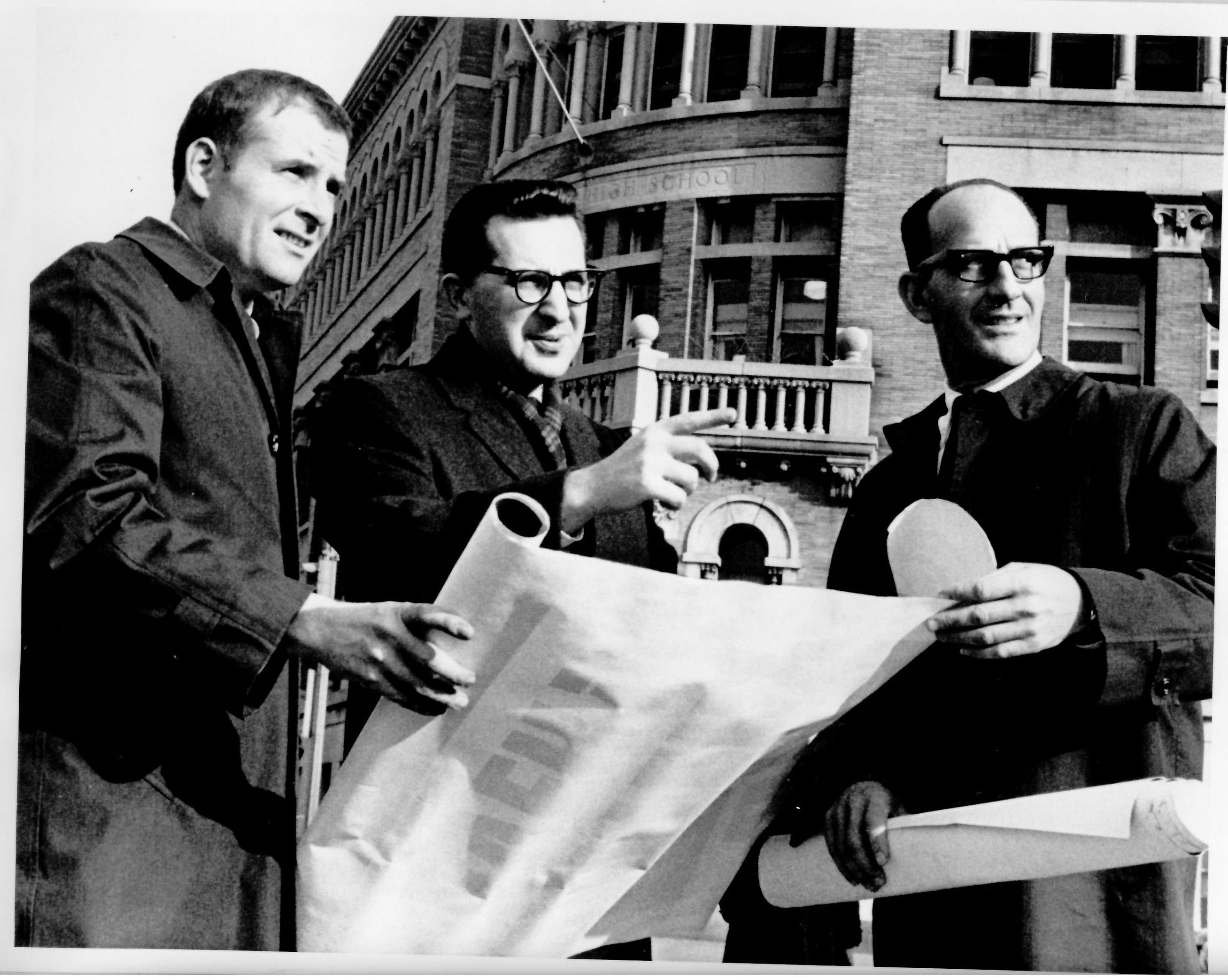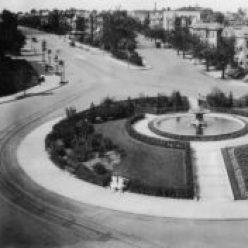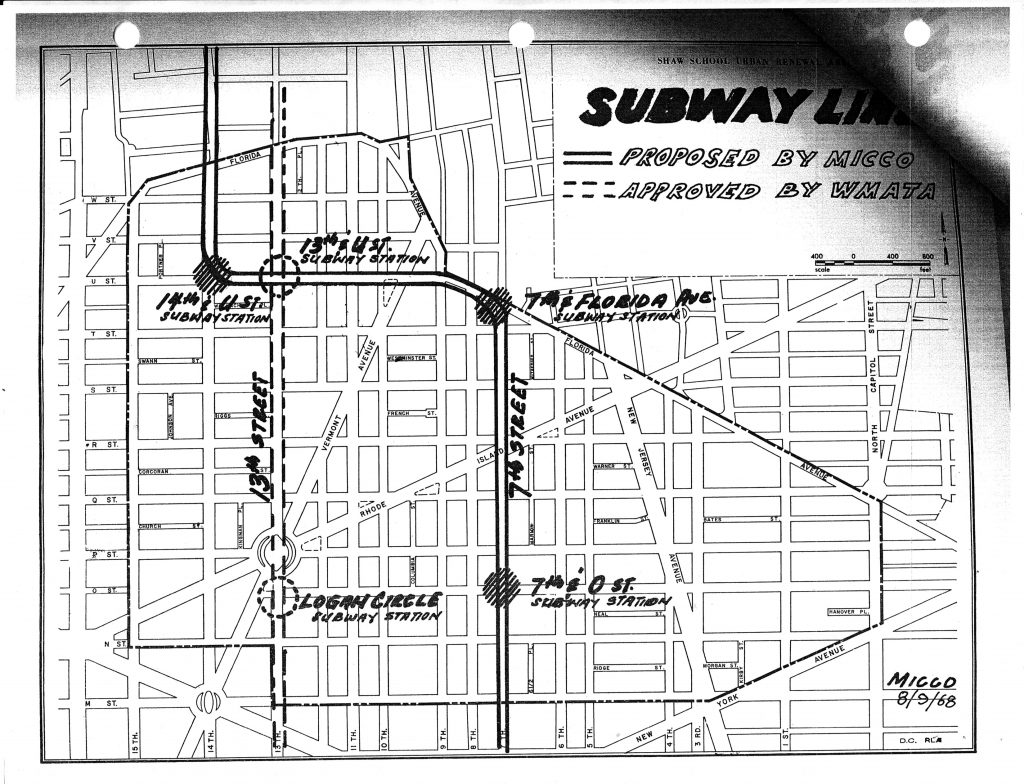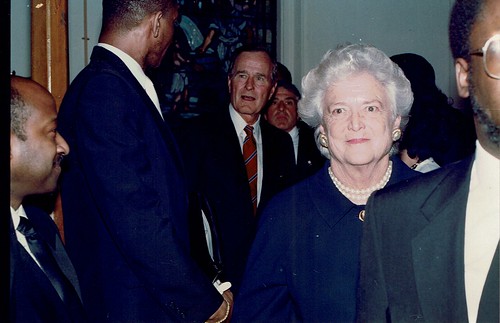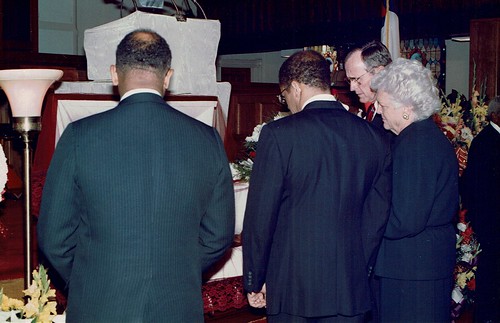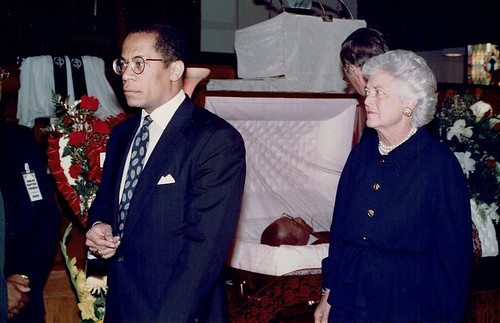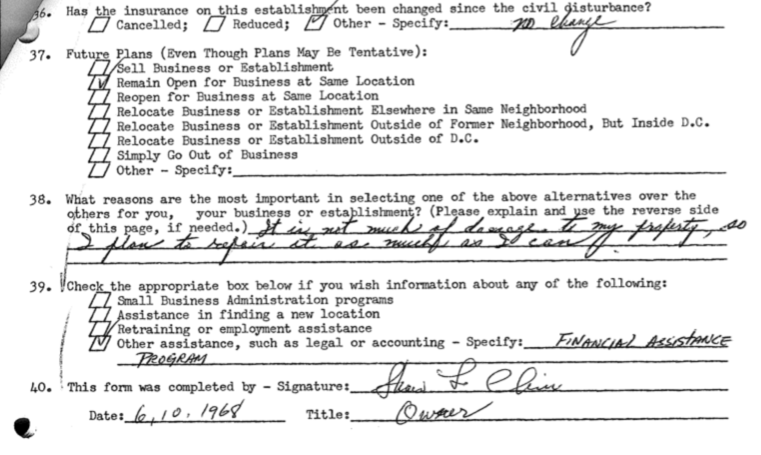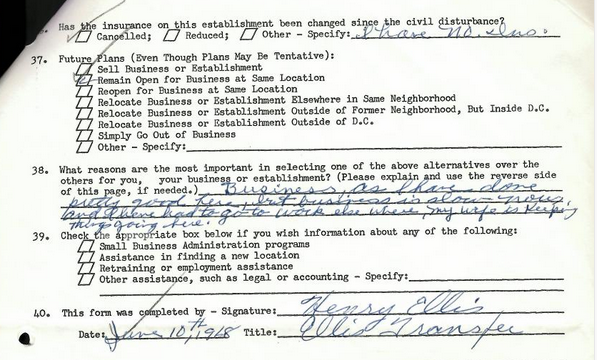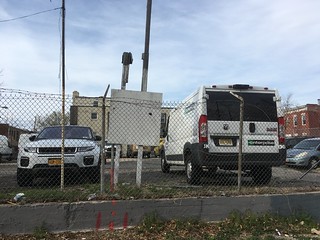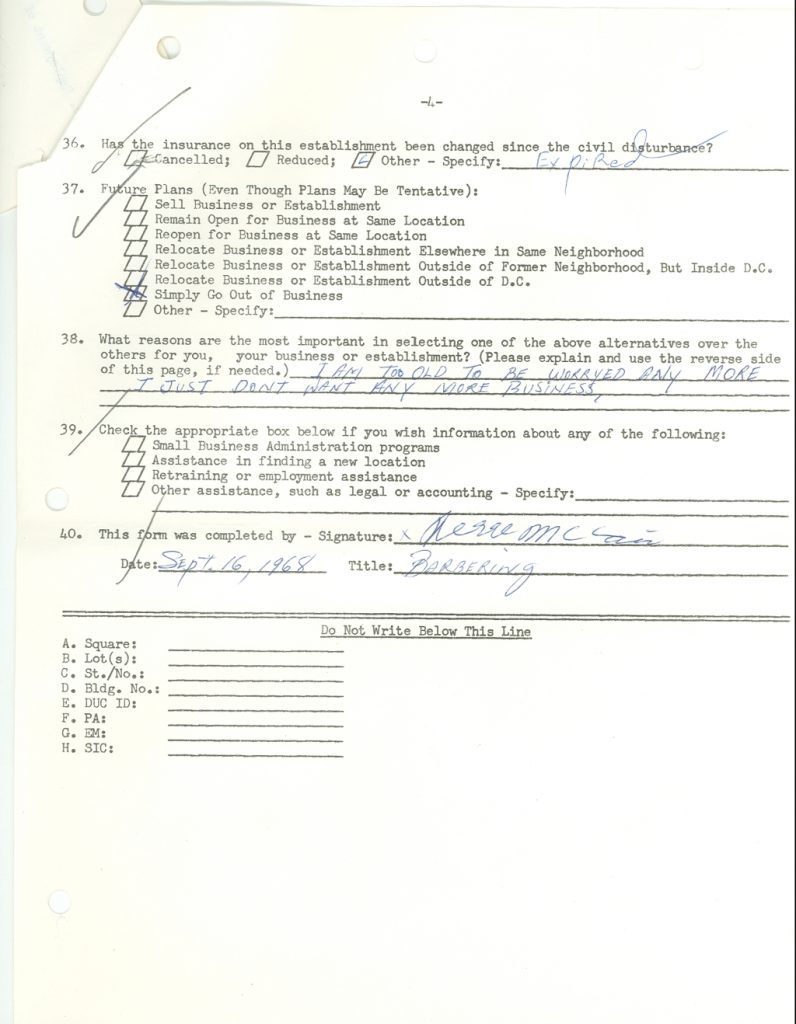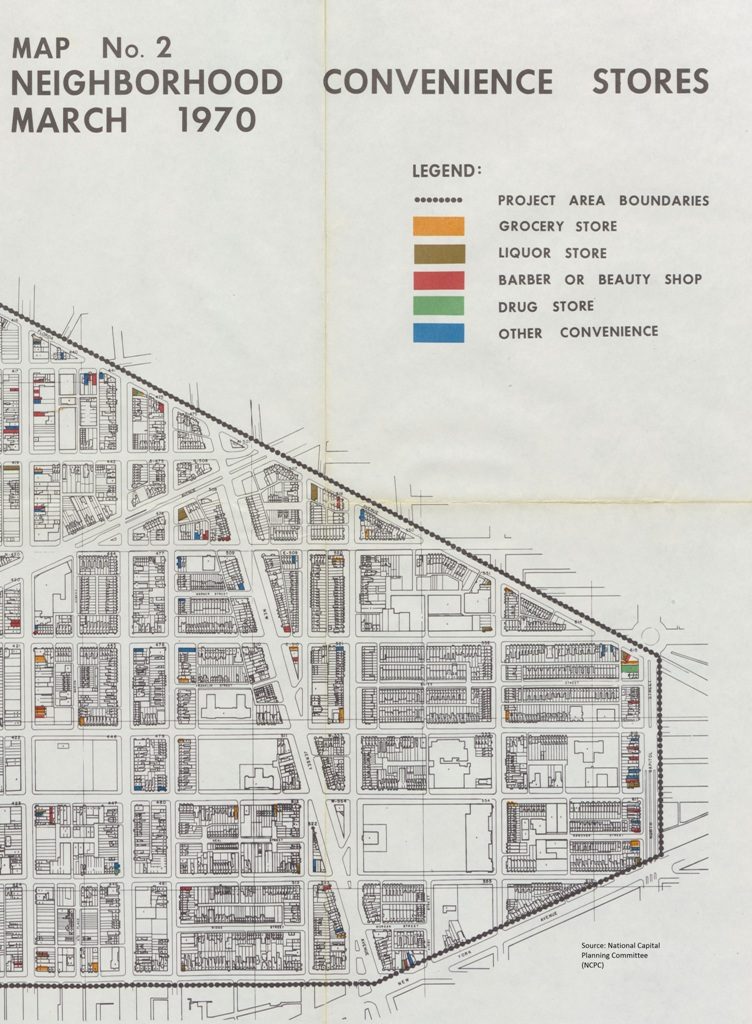Though I moved to Shaw in 2000, I have some memories of the neighborhood prior to that because my aunts attend Shiloh Baptist at 9th and P. As a teen and a twenty-something visiting from Florida, I would get dragged to the neighborhood.
The scars from the ’68 riots were unavoidable and looming 20 and 30 years after the fires. The boarded up vacant buildings that outnumbered the occupied spaces was the character of 7th and 9th Street. Depressing, sketchy and dirty were other characteristics of the area before it shifted into full gentrification mode. It has taken 50 years to heal, mostly. There are still vacant buildings and nothingness at the corner of 7th & Q, the Shiloh side of 9th St, and other spots, so not completely.
Ray Milefsky (RIP) before he passed was working on tracing what was damaged on the block where he lived during the riots. I found this and shared it with him.
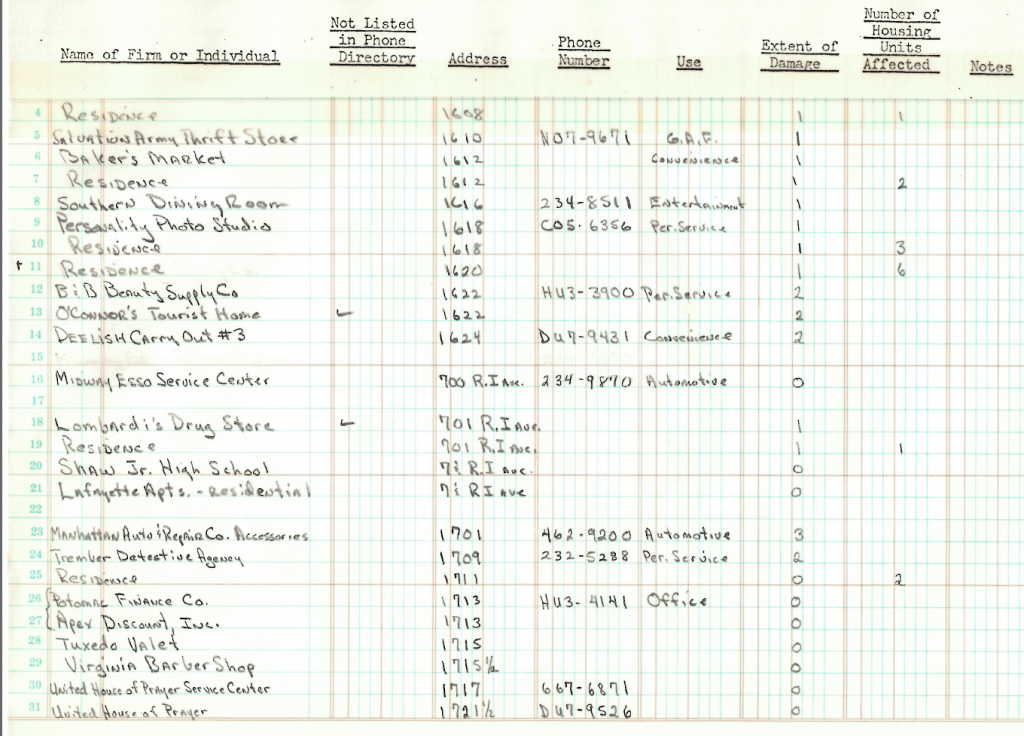
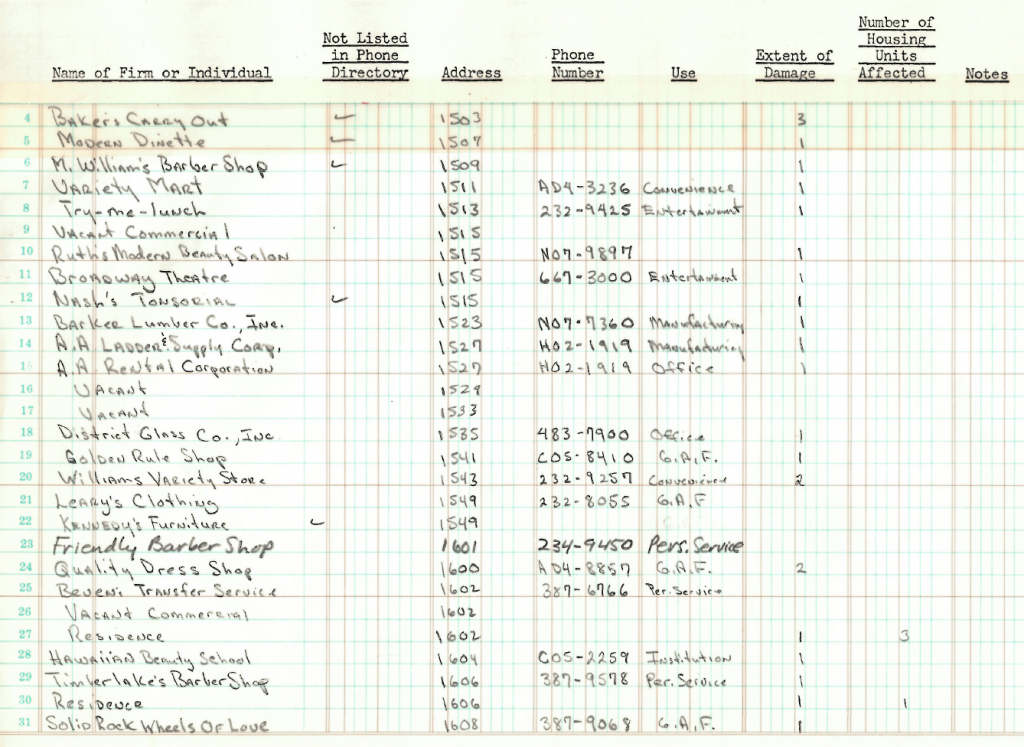
From what I can tell 0 meant no damage and 3 meant severe damage. Anyway, Ray had a theory that the riots were like a kristallnacht, since a number of white businesses damaged were Jewish owned. So the Jews in Shaw were removed.
Recent events with the Ward 8 councilman making an off hand remark about Jews controlling the weather, is a fair reminder that the African-American/Jewish relationship hasn’t been perfect. There were complaints about these white owned businesses and post riot reports of damaged properties revealed that the business owners weren’t too keen on the neighborhood either. For many the riot was the last straw and for others not being able to get or renew their insurance prevented them from coming back.
The riot transformed the neighborhood. Spots that once held stores or commercial properties later became apartments. There were other transformations, but I’m unsure to whom or what to give credit. The city and urban planners scaled back their grand plans to bulldoze the neighborhood, but earlier efforts by local leaders probably should receive credit for that, but the riot added something to that dynamic. It also weakened the neighborhood leaving it ripe for the redevelopment/ gentrification that came 30 years later after the neighborhood failed to rebuild and recover.
The Washington Post did a great feature this week on the 1968 riot. The graphics are excellent and the stories well written.
